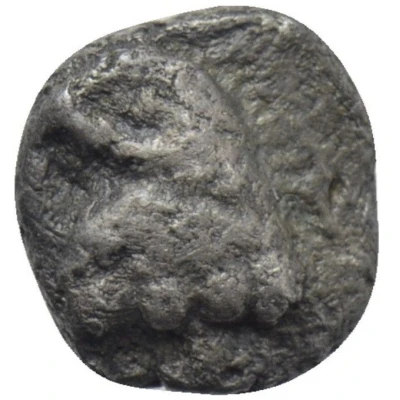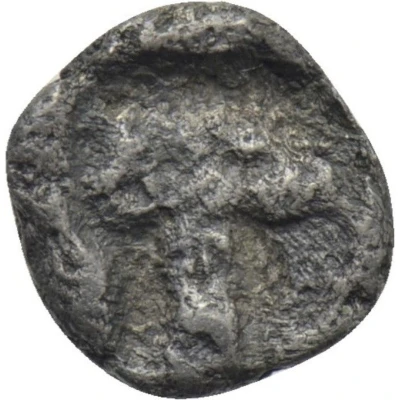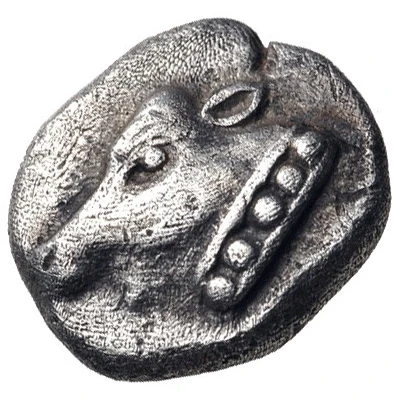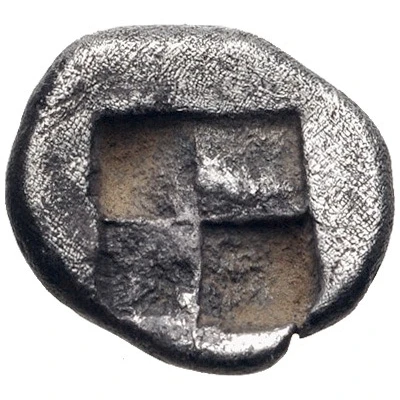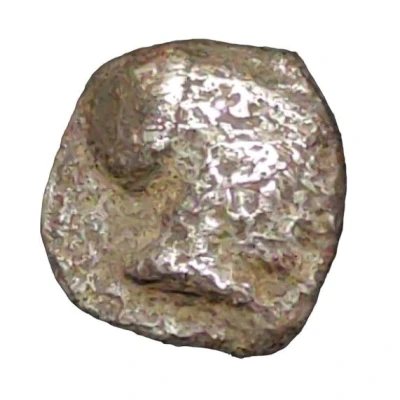
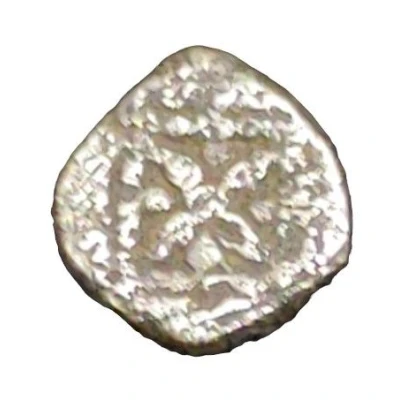

© PA-Engineer (CC0)
Hemiobol 500 BC - 400 BC
| Silver | 0.35 g | 7 mm |
| Issuer | Uncertain Ionian city |
|---|---|
| Type | Standard circulation coin |
| Years | 500 BC - 400 BC |
| Value | ½ Obol (1⁄12) |
| Currency | Drachm |
| Composition | Silver |
| Weight | 0.35 g |
| Diameter | 7 mm |
| Thickness | 1 mm |
| Shape | Round (irregular) |
| Technique | Hammered |
| Orientation | Variable alignment ↺ |
| Demonetized | Yes |
| Updated | 2024-10-10 |
| Numista | N#343231 |
|---|---|
| Rarity index | 97% |
Reverse
Stellate (Star) or floral pattern of 4 rays with dots between rays inside incuse squares.
Comment
This is a rare and uncataloged coin with a few examples seeing auction:https://www.cngcoins.com/Coin.aspx?CoinID=224147
https://www.cngcoins.com/Coin.aspx?CoinID=250736
Interesting fact
The Hemiobol coin was used in ancient Greece during the 5th century BC and was equivalent to half of an obol, which was the standard unit of currency at the time. The coin's design featured a distinctive "incuse" technique, where the image on one side of the coin was stamped into the metal, creating a sunken relief. This unique design made the Hemiobol easily recognizable and helped to prevent counterfeiting.
